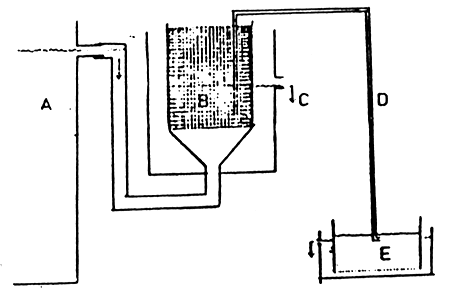Collecting seabass eggs from spawning tanks by scoopnet is necessary to stop the flow of air and water into the tank in order to allow the eggs to float on the water surface before handnetting. This period of requirement might reduce the dissolved oxygen in water to a level that could stress the spawner especially in high stocking density brookstock tanks. Moreover, turbulence caused by fish movement in the tank tends to redistribute the eggs in the water column resulting in incomplete collection of eggs. To avoid those problems, the seabass eggs are transferred into the first collector at a flow rate of 20–50 1/min. The water is passed through a first collector made of fine netting (300–300 um) with a capacity of 10 1. The eggs are then siphoned from a primary collector into a second net collector at a flow rate as low as 0.2 to 1 1/min.

Fig. A1.1 Diagram of the two-stage egg collector: